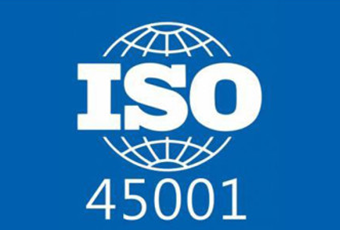The new international standard ISO 45001:2018 for occupational health and safety management systems was finally released on March 12, 2018. ISO45001 will replace the widely adopted OHSAS 18001:2007 and other national standards, and the conversion period will be three years after the new version of the standard is released. From March 12, 2021, all old standard certification certificates will be invalidated.

1. Background of standard revision
Universal, more authoritative, easier to integrate, easier to manage
First of all, according to the survey, currently about 45 countries use the OHSAS 18001 standard framework to manage their occupational safety and health (occupational health management, safety management, and sanitation management) systems. Although it has a wide range of applications, it is not universally used in the world. Instead, it is transformed into an ISO standard. Only its members have nearly 70 countries, which further expands its application range. At the same time, the ISO standard is a globally recognized standard, which not only further expands its scope of application, but also makes it more authoritative.
Secondly, ISO has international expertise. Through ISO member organizations, nearly 70 countries have participated in the development of ISO 45001 in the form of participants or observers.
Third, many organizations are now using ISO management system standards, which will make it easier to integrate with other occupational health and safety standards. At the same time, for many small businesses, there may only be one person managing safety and environmental issues, so the committee is also paying more attention to the possibility of integration with ISO 14001.
2. The difference between ISO 45001 and OHSAS18001
The construction of ISO 45001 is based on the existing specifications of OHSAS18001, and its main goals are the same. They are all to improve the organization's occupational health and safety performance. At the same time, there are also the following differences:
*Using the advanced structure of the ISO management system
* Pay more attention to the "organizational environment"
*Emphasize the responsibilities and leadership of top management
*Focus more on management responsibilities
*Emphasizes risk-based thinking
* Pay more attention to performance monitoring and measurement
In the new standard, an organization will not only focus on its immediate health and safety issues, but will take into account the greater social expectations. Organizations need to consider their subcontractors and suppliers, and for example, how their own work will affect neighboring neighbors. This will be more extensive than just focusing on the conditions of internal employees, which means that the organization cannot just "graft" its risks out through outsourcing.
ISO 45001 emphasizes that these occupational health and safety factors are embodied in the entire management system of the organization and a higher degree of recognition from management and leadership. This will be a big change for those users who are currently accustomed to delegating responsibility to a security manager rather than fully integrated into the operation of the organization. ISO 45001 requires occupational health and safety factors to be an integral part of an organization's complete management system, rather than just an additional part.
3. The difference between ISO 9001, ISO 14001 and ISO 45001
ISO implements the similarities of the three standards:
The general policy and objectives of the organization's implementation and management are the same.
1. The three standards use a common process model structure, which is similar in structure and easy to use.
2. The principle of the system is the PDCA (plan-execute-check-improve) cycle.
3. All need a cultured management system.
4. All clearly have a documented division of responsibilities.
5. Both proposed to achieve continuous improvement through system operation.
6. Both have made commitments to comply with regulations and other requirements.
7. Both propose to use internal audit and management review to evaluate the effectiveness, suitability and compliance of the system operation.
8. Both require management review and strengthen training and education for non-conforming items.
9. Both require the top management of the organization to appoint a management representative who is responsible for establishing, maintaining and implementing a management system.
Add.:Room703、705/7F, Development Building, Tian An Hi-Teck Ecological Park, No.555 North Road Panyu Avenue, Panyu District, Guangzhou City, 511400, China
Tel.:020-39211670 Fax:020-39211640 E-mail:info@certitek.cn

